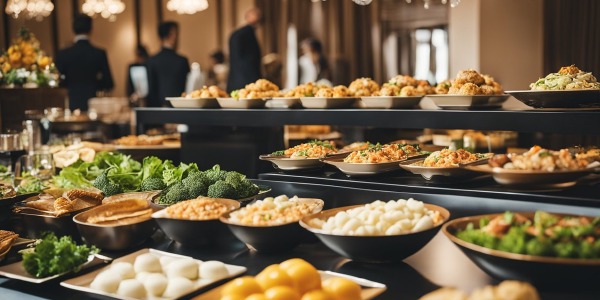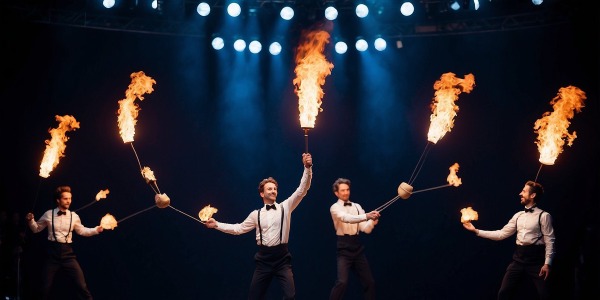The 12 Strangest Buildings and Structures in the World: Architectural Wonders That Amaze
Have you ever wondered about the strangest buildings and structures around the world? Some buildings stand out not just for their size but for their unique designs and eccentric styles.

In this article, you’ll explore 12 of the most bizarre and fascinating buildings from different countries. You’ll be amazed at the creativity and engineering behind these architectural wonders.
1. The Crooked House, Poland

The Crooked House, or Krzywy Domek, is in Sopot, Poland. Built in 2004, its design was inspired by fairytale illustrations and cartoons. You will notice its odd, wavy shape right away.
When you walk by, it’s like stepping into a fantasy world. The building’s walls and roof appear to be melting. This design makes it stand out from other buildings.
Inside, you will find shops, cafes, and offices. It’s a popular tourist attraction and a favorite spot for taking photos. People from all over come to see its unique architecture.
2. The Basket Building, USA

In Newark, Ohio, you can find the Basket Building. Designed to look like a giant picnic basket, it stands out even from a distance. The Longaberger Company, known for making baskets, decided to build their office in this unique shape.
The building is seven stories tall and covers 180,000 square feet. It has two large handles on top, each weighing nearly 150 tons. These handles even have heating elements to prevent ice from forming in the winter.
When you walk inside, you’ll find a mix of traditional office space and basket-themed decor. The interior is just as impressive, with high ceilings and natural light. It’s a fun place to visit and takes creativity in architecture to a whole new level.
If you’re ever in Ohio, this is one landmark you don’t want to miss. It’s open to the public for tours, and you can learn more about the company’s history while marveling at this extraordinary building.
3. The Dancing House, Czech Republic

The Dancing House is located in Prague, Czech Republic. Its nickname is “Fred and Ginger,” after the famous dancers. The building looks like it is swaying, giving it a unique, eye-catching appearance.
Designed by architects Vlado Milunić and Frank Gehry, it was completed in 1996. The structure stands out among the traditional buildings in Prague. It features curved lines and unusual shapes.
Inside, you can find offices, a restaurant, and a gallery. The top floor has a stunning view of the city. The Dancing House has become a symbol of modern architecture in Prague. Don’t miss it if you visit the city!
4. Kubuswoningen (Cube Houses), Netherlands

In Rotterdam, you can find the unique Cube Houses, known as Kubuswoningen. These houses are quite the sight!
Designed by architect Piet Blom in the late 1970s, these tilted cube-shaped homes stand on their corners. They look like they are balanced on a single point.
The design aims to optimize space. The houses are tilted at a 45-degree angle, making use of vertical space. Each cube house has three floors: a triangular ground floor entrance, a living area on the first floor, and bedrooms on the top floor.
Walking through the area feels like you are in a modern art piece. The bright yellow color and sharp angles catch your eye. It’s a favorite spot for photographers and travelers alike.
Some of the houses are open to the public, so you can see how people live in them. Inside, you will notice that the tilted design creates unique spaces. It might be a bit challenging to find furniture that fits!
These Cube Houses are more than just homes. They are also a piece of architectural history in the Netherlands. If you ever visit Rotterdam, they are worth a visit.
5. Wonderworks, USA

Wonderworks is a unique building. At first glance, it looks like an upside-down mansion. The illusion makes it seem like it was lifted and dropped by a tornado.
Inside, you will find over 100 interactive exhibits. These displays cover topics like space, physics, and math. It’s designed to make learning fun for all ages.
One of the main attractions is the Inversion Tunnel. As you walk through it, you feel like the world is turning upside down. Kids and adults both enjoy the thrill.
Wonderworks also features a glow-in-the-dark ropes course. You climb and navigate through various obstacles while glowing lights guide your way. It’s an exciting challenge for everyone.
Another popular exhibit is the Bubble Lab. You can create giant bubbles and even step inside one. It’s a hit with younger visitors.
The building also hosts laser tag and a 4D motion ride. These activities provide high-energy fun and excitement, keeping everyone engaged.
Your visit to Wonderworks is filled with wonder and discovery. Each exhibit aims to inspire curiosity and creativity. You will leave with fascinating memories.
6. Kansas City Public Library, USA

The Kansas City Public Library stands out because of its unique design. The exterior of the parking garage looks like a giant bookshelf.
You will see 22 book spines that are over 25 feet tall. Each spine represents a different book chosen by the Kansas City community.
The titles featured range from classics like “To Kill a Mockingbird” to popular works like “Harry Potter.” This makes the library both functional and artistic.
Walking by, you can’t help but admire the creativity that went into this design. It draws people in and makes reading exciting.
Inside, the library offers many resources. You will find books, computers, and meeting rooms. The space is both modern and welcoming.
If you visit Kansas City, make sure to stop by and see it in person. The library building truly is a sight to behold.
7. Ferdinand Cheval Palace, France

The Ferdinand Cheval Palace, also known as Palais Idéal, is in Hauterives, France. It was built by a postman named Ferdinand Cheval.
Cheval spent 33 years building this palace. He used stones he collected during his mail route. The palace has a mix of different architectural styles.
You’ll see elements of different cultures, including Hindu and Egyptian. It’s made entirely by hand, with no formal architectural training.
The palace is now a tourist attraction. Many people visit to see this unique and imaginative creation. The details and creativity make it one of a kind.
Cheval’s dedication and vision are inspiring. He proved that one person can create something extraordinary with persistence and passion.
8. The Lotus Building, China

The Lotus Building is found in Wujin, China. It looks like a giant, blooming lotus flower floating on water. The design is colorful and captures the eye.
You will find it in the middle of a lake in the People’s Park. The building has three parts of the lotus flower, representing different stages of the flower in bloom.
Inside, there are offices and exhibition spaces. At night, the building lights up and reflects beautifully on the water. This makes it a great sight to see both during the day and at night.
The architects wanted the Lotus Building to blend with nature. They used eco-friendly materials and made sure that it would look good throughout the year. You can visit to enjoy art exhibits or just take in the stunning architecture.
9. Habitat 67, Canada

Habitat 67 is a unique housing complex in Montreal, Canada. Designed by architect Moshe Safdie, it was completed in 1967 for the Expo 67 World’s Fair.
You will notice its unusual design right away. The complex looks like a jumble of stacked concrete boxes. Each unit is different, with private terraces and gardens.
The idea behind Habitat 67 was to create a community with the benefits of both urban and suburban living. Despite its odd look, it offers practical and comfortable living spaces.
The complex is made up of 354 identical, prefabricated concrete units. These units are arranged in various combinations, creating 146 residences. Each residence varies in size and layout.
The innovative design aims to provide light, air, and privacy. It’s also an iconic example of Brutalist architecture. You might find its bold, blocky style fascinating.
Living in Habitat 67 gives you a sense of community. The shared spaces and unique layouts encourage interaction among residents.
Take a stroll around the complex and you’ll see how well thought out the placement of each unit is. It’s a remarkable place to explore.
10. Longaberger Home Office, USA

You won’t believe your eyes when you see the Longaberger Home Office in Newark, Ohio. It’s a gigantic picnic basket! The building looks exactly like the company’s famous woven baskets.
Dave Longaberger, the founder of the company, came up with the idea. He thought a basket-shaped office would be fun and unique. The building is seven stories tall and 180,000 square feet.
Massive handles stretch over the top, weighing nearly 150 tons. The design includes basket-like details, such as faux weaving patterns. Inside, the office space is modern and functional.
It’s not every day you see an office that looks like a huge picnic basket. People often stop to take photos. The Longaberger Home Office truly stands out as one of the strangest buildings in the world.
11. Capital Gate, UAE

Capital Gate is a building in Abu Dhabi, UAE. It’s famous for its unique design. The tower leans 18 degrees to the west, which is more than four times the angle of the Leaning Tower of Pisa.
You’ll be surprised to learn that the building has 35 stories. It is one of the tallest buildings in the city. The structure is also known as the “Leaning Tower of Abu Dhabi.”
Engineers used a special technique to create the tilt. This technique is called “pre-cambering.” They built the core slightly off-center to achieve the lean. It makes the building very stable despite its unusual shape.
Inside, you’ll find a mix of offices and a hotel. The hotel is luxurious and attracts many visitors. The views from the upper floors are amazing. You can see the Arabian Gulf and the city skyline.
The Capital Gate is part of the Abu Dhabi National Exhibition Centre. It serves as a hub for business and tourism. When you visit, it’s hard not to be impressed by this architectural marvel.
12. Atomium, Belgium

The Atomium in Brussels, Belgium, is a unique and eye-catching structure. It was built for the 1958 Brussels World’s Fair, also known as Expo 58. The design is based on an iron crystal magnified 165 billion times.
Each of the nine spheres is about 18 meters in diameter. They are connected by tubes, which contain escalators and stairs. You can travel through them to explore exhibits inside.
When you visit, you can go to the top sphere. From there, you get a great view of the city. The Atomium also has a restaurant where you can enjoy Belgian delicacies while taking in the scenery.
The structure is made of stainless steel and has become an iconic symbol of Brussels. At night, it lights up, making it look even more magical. It’s a perfect blend of science and art.
Architectural Innovations

Innovative architecture often stands out because of new design techniques and the use of unconventional materials. These innovations push the boundaries of what we know about building structures and make us rethink traditional methods.
Modern Design Techniques
Modern design uses advanced technology to create strange and unique buildings. Architects now use computer software to model and visualize their projects before construction begins. This allows them to experiment with unusual shapes and structural designs.
3D printing has also become popular in building modern structures. This technique allows for more precise and intricate designs. It’s now possible to build parts of buildings in a factory and then assemble them on-site.
Architects also use sustainable design techniques to make buildings more eco-friendly. Green roofs, solar panels, and energy-efficient systems help reduce the environmental impact of new structures.
Use of Unconventional Materials
Architects today explore new materials that weren’t traditionally used in construction. Recycled materials, for instance, are now common in many innovative buildings. By reusing items like metal, plastic, or even old shipping containers, builders give these materials a second life.
Another unconventional material is bamboo. It’s strong, flexible, and grows quickly, making it a sustainable choice. Some architects even use it for large structures.
Glass is used in unexpected ways too. Entire buildings or parts of them are made from glass to create transparent and open spaces. This material allows natural light to flood the interiors, making the spaces brighter and more inviting.
Rubber is also making its way into architecture. Used tires and other rubber products are sometimes repurposed into building materials, offering an eco-friendly option.
These materials, combined with modern design techniques, create buildings that are not only strange but also pioneering in their approach to architecture.
Cultural Significance

Strange buildings can hold deep cultural meanings and often influence local traditions and customs.
Symbolic Meanings
Many unique structures symbolize ideas or historical events. The Sagrada Familia in Barcelona, for instance, represents religious devotion and architectural innovation. Every feature, from its spires to its intricate carvings, tells a story of faith and creativity.
The Lotus Temple in India resembles a lotus flower, symbolizing purity and peace in various Eastern cultures. Its design invites visitors to find tranquility and meditate.
These buildings can also reflect the identity and values of a place. The Sydney Opera House, with its sail-like design, mirrors Australia’s deep connection to the sea and maritime history.
Influence on Local Traditions
Strange buildings often become central to local traditions. In Spain, the annual “La Tomatina” festival is influenced by the architecture of Buñol, where participants throw tomatoes in celebration, often ending in front of its historic structures.
In Italy, the Leaning Tower of Pisa doesn’t just attract tourists; it’s deeply woven into local events and celebrations. The tower’s unique tilt is a source of pride and becomes a focal point during festivals.
These buildings can also inspire new traditions. The futuristic design of the Beijing National Stadium, known as the Bird’s Nest, has encouraged innovative sports and cultural events since the 2008 Olympics. The structure’s design impacts how events are planned and experienced.
Engineering Marvels
These extraordinary structures showcase human creativity and problem-solving. They face unique structural challenges and adapt ingeniously to their environments.
Structural Challenges
Creating these buildings involves solving some tough structural problems. For example, the Burj Khalifa in Dubai had to endure strong desert winds. Engineers used a special “Y” shaped design to make it sturdy.
Another example is the Millau Viaduct in France. It is one of the tallest bridges in the world. To keep it steady, engineers used very tall pylons and tension cables. They also used special lightweight materials to reduce the overall weight.
The Shard in London had another challenge—space. It’s in a crowded city, so it had to be tall and narrow. Engineers used a strong steel framework to give it stability despite its unique shape.
Environmental Adaptations
Many buildings also adapt to their surroundings in amazing ways. Gardens by the Bay in Singapore has “Supertrees” that collect rainwater and solar energy. These trees also provide shade and help cool the area.
The Svalbard Global Seed Vault in Norway is designed to stay cold even if the power fails. It uses the natural cold of the Arctic to keep seeds safe for future generations.
In the desert, the Masdar City project in Abu Dhabi is built with shade structures and wind towers to keep the city cool. This reduces the need for air conditioning and makes it more sustainable.
These innovative solutions show how engineers use creativity to solve complex problems and improve the places where we live and work.
Frequently Asked Questions
Here you’ll find answers about some of the world’s most unique buildings and what makes them stand out. We’ll look at famous examples, key features, and practical uses.
What are some examples of the most unusual architectural designs globally?
The Crooked House in Poland stands out for its warped and twisted appearance. The Basket Building in the USA is shaped exactly like a giant picnic basket. The Dancing House in the Czech Republic is known for its curvy, flowing design.
Can you list the top unique buildings that have become famous worldwide?
Notable buildings include Kubuswoningen (Cube Houses) in the Netherlands, which are tilted and look like cubes balancing on a single edge. Wonderworks in the USA appears upside down, as if it landed on its roof by accident.
How would you define a strange building or structure in architectural terms?
A strange building often breaks traditional design rules. It might have unusual shapes, forms, or purposes that make it stand out. Its design can challenge or surprise people, making it memorable and distinctive.
Which weird buildings have earned a spot in the history of architecture?
The Dancing House in Prague is celebrated for its modern, deconstructivist style. The Basket Building has also gained historical significance due to its symbolic design and unique appearance.
What are some distinctive features of weird or unique buildings compared to traditional structures?
Unique buildings often use unconventional materials or shapes. They may have asymmetrical forms, bright colors, or unexpected functions. Their designs are often created to make statements or to attract attention.
Are there any strange buildings that have practical functions beyond their unusual appearance?
Yes, many strange buildings are fully functional. The Basket Building, for instance, served as the headquarters for a basket company. The Dancing House is used for offices and includes a restaurant, blending practicality with its unique look.



